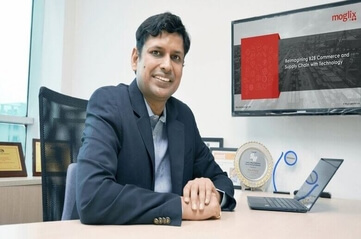Last-Mile Delivery
What is Last-Mile Delivery?
With technology advancing so fast the world has become one giant tech village. Entertainment, communication, commerce has been facilitated, providing a consumer in any part of the world with a plethora of options to choose from, causing a frantic surge in the functions of b2b supply chains. It has generated cut-throat competition among sellers to provide the best customer experience with quality products, fast delivery, and grievance redressal.
Last-mile delivery is essentially the journey a product makes from a transportation hub to the final delivery destination, i.e. the consumer. This process may include shipment of the product from manufacturing departments to the warehouse shelf, travelling at the back of a cargo truck right up to the customer’s doorstep. The aim of last-mile logistics is to deliver items to the end-user as fast as possible.
What Is The Importance of Last-Mile Logistics?
One of the most prevalent problems of b2b and retailers is of the last mile. While it is the key ingredient to customer satisfaction, it is also the most costly and time-consuming. The popularity of e-commerce with the ever-increasing number of parcels each day increases customer expectation of fast and free delivery. In keeping up with competitors, retailers are forced to provide the option of free delivery to customers leaving the transportation and logistics intermediaries to shoulder these costs. Last-mile delivery costs make up a substantial portion of the overall cost of shipping — comprising 53% overall.
Other than costs, businesses need to be prepared for the time consumed to deliver the product to the end-user. Tracking the same is costly, and once the product is ‘out for delivery’ it seems to take ages. This process is severely inefficient and includes multiple stops with low drop sizes. In rural areas delivery stops on some routes may be extremely far apart, with only a couple or more parcels to be delivered which takes all day. While urban regions don’t have that issue, delays due to traffic congestion are rampant there.
What Is The Last-Mile Problem?
One of the most prevalent problems of b2b and retailers is of the last mile. While it is the key ingredient to customer satisfaction, it is also the most costly and time-consuming. The popularity of e-commerce with the ever-increasing number of parcels each day increases customer expectation of fast and free delivery. In keeping up with competitors, retailers are forced to provide the option of free delivery to customers leaving the transportation and logistics intermediaries to shoulder these costs. Last-mile delivery costs make up a substantial portion of the overall cost of shipping — comprising 53% overall.
Other than costs, businesses need to be prepared for the time consumed to deliver the product to the end-user. Tracking the same is costly, and once the product is ‘out for delivery’ it seems to take ages. This process is severely inefficient and includes multiple stops with low drop sizes. In rural areas delivery stops on some routes may be extremely far apart, with only a couple or more parcels to be delivered which takes all day. While urban regions don’t have that issue, delays due to traffic congestion are rampant there.
Optimizing The Last-Mile
Traditional transportation services such as UPS, USPS, or FedEx in the US or DTDC in India, are not equally successful and profitable in all regions of the world. B2b chains and retailers are beginning to realise this and are looking for alternatives to satisfy their growing needs. In this regard, the gig economy is actually a lifesaver. From taking a cab to reach one’s destination to getting flowers delivered to someone, or booking a hotel, crowdsourcing local services through online platforms like Uber, Zomato, Airbnb, etc extends to several industries like food, hospitality, transportation.
Retailers can use this crowdsourcing model to optimise their last-mile delivery issues. Retailers, logistics partners, and consumers can connect directly with local, non-professional couriers who use their own transportation to make specific deliveries. It reduces the time and gives freedom to make scheduled and on-demand deliveries. Other alternatives include click-to-collect locations, drones, etc. With the focus on last-mile delivery alternatives, retailers can adapt to the ever-changing retail environment.
Industries & Impact
 My vision for Moglix is to change the face of industrial commerce: Rahul Garg
My vision for Moglix is to change the face of industrial commerce: Rahul Garg
 Now and Next in the Infrastructure Sector
Now and Next in the Infrastructure Sector
 Moglix enabled Agile MRO Procurement at Scale through Workflow Digitization of large EPC company
Moglix enabled Agile MRO Procurement at Scale through Workflow Digitization of large EPC company
